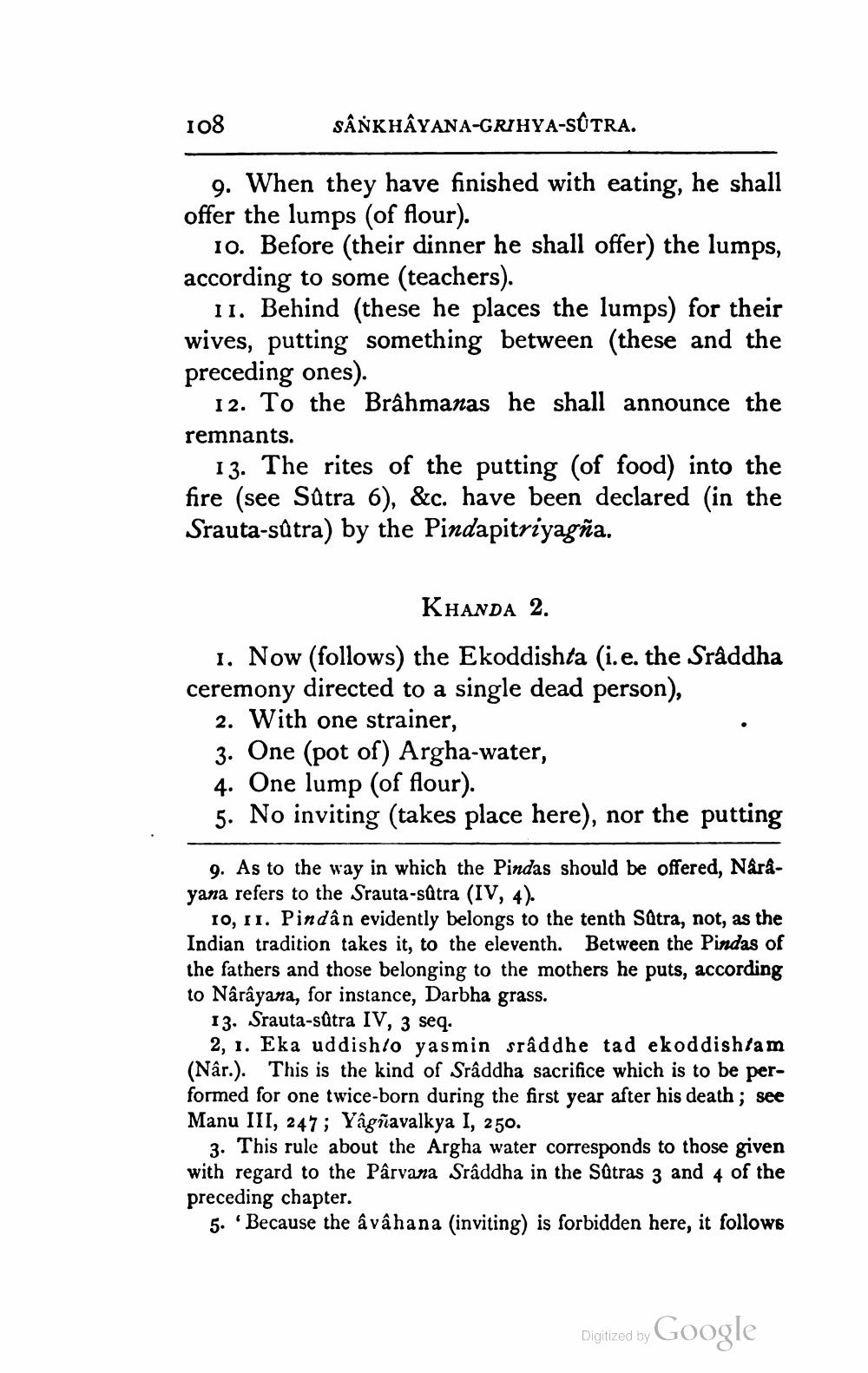________________
108
SÂNKHÂVANA-GRIHYA-SOTRA.
9. When they have finished with eating, he shall offer the lumps (of flour).
10. Before (their dinner he shall offer) the lumps, according to some (teachers).
11. Behind (these he places the lumps) for their wives, putting something between these and the preceding ones).
12. To the Brâhmanas he shall announce the remnants.
13. The rites of the putting (of food) into the fire (see Satra 6), &c. have been declared (in the Srauta-sūtra) by the Pindapitriyagña.
KHANDA 2.
1. Now (follows) the Ekoddishta (i.e. the Sraddha ceremony directed to a single dead person),
2. With one strainer, 3. One (pot of) Argha-water, 4. One lump (of flour). 5. No inviting (takes place here), nor the putting
9. As to the way in which the Pindas should be offered, Nåráyana refers to the Srauta-sâtra (IV, 4).
10, II. Pindan evidently belongs to the tenth Sætra, not, as the Indian tradition takes it, to the eleventh. Between the Pindas of the fathers and those belonging to the mothers he puts, according to Narayana, for instance, Darbha grass.
13. Srauta-sútra IV, 3 seq.
2, 1. Eka uddishlo yasmin sraddhe tad ekoddishtam (Nâr.). This is the kind of Sraddha sacrifice which is to be performed for one twice-born during the first year after his death; see Manu III, 247; Yâgñavalkya I, 250.
3. This rule about the Argha water corresponds to those given with regard to the Pârvana Sraddha in the Sätras 3 and 4 of the preceding chapter.
5. Because the âvâhana (inviting) is forbidden here, it follows
Digitized by Google




